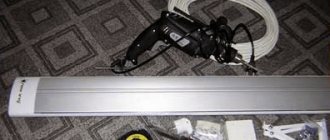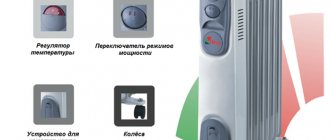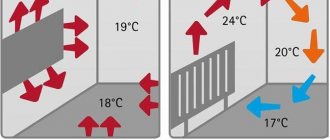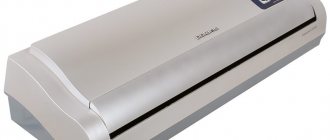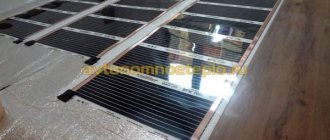Due to numerous advantages, the demand for infrared heaters is increasing every year. With their help, you can quickly and efficiently warm any residential or industrial premises. IR heaters produce significantly more heat than many other heating devices. For example, fan heaters. In addition, this type of climate control equipment does not burn the oxygen available in the room. According to manufacturers, the harm of an infrared heater to a person’s well-being is insignificant. But practice and research do not fully confirm this.
What is infrared radiation?
While studying the Sun in 1800, the English scientist W. Herschel measured the temperature of various parts of the visible spectrum. They discovered that beyond the rich red color lies the highest point of heat. Then the concept of infrared radiation (IR radiation) appeared in science.
Infrared rays are inaccessible to the naked eye, but are felt by the skin as heat. They refer to electromagnetic radiation that lies between the red end of visible light and microwave radio waves. IR radiation is also commonly called thermal radiation.
It is emitted by atoms, which have excess energy, and ions. Every body with a temperature above zero is a source of infrared radiation. The sun is a well-known natural source of infrared rays.
The wavelength of infrared radiation depends on the heating temperature. The highest temperature is for short waves with high radiation intensity. The range of infrared rays is wide. It is divided into varieties:
- short waves – temperatures above 800 degrees Celsius,
- medium waves – up to 600 degrees Celsius,
- long waves - up to 300 degrees Celsius.
The influence of infrared radiation on the human body is determined by the length of these waves, as well as the time period of exposure.
Operating principle of an infrared heater
Most man-made heaters are not particularly cost-effective: the heat they emit heats the air, and then the heated air transfers the heat to you and us and surrounding objects. The operating principle of the IR heater is borrowed from the “patent office of nature”. And there everything is economical and expedient. Heat rays coming from the sun are absorbed by surrounding objects, which, in turn, heat the air.
This is exactly how an infrared heater works. Its main elements are an emitter and a reflector. The emitter serves as a source of infrared radiation, that is, heat, and the reflector directs these heat waves in the desired direction. Then the heated interior items and walls give off the resulting heat, heating the air.
The benefits of infrared rays for humans
Long-wave infrared rays are beneficial to human health. It is often used in medicine, particularly in physiotherapeutic procedures, which can improve blood circulation, metabolism and neuroregulation.
The positive effect of infrared radiation on the human body is as follows:
- memory and brain function improves,
- blood pressure is normalized,
- hormonal balance is normalized,
- salts, toxins and heavy metals are eliminated,
- the proliferation of fungi and harmful microorganisms stops,
- water-salt balance is restored,
- pain relief occurs
- an anti-inflammatory process occurs
- cancer cells are suppressed
- the results of radioactive radiation are neutralized,
- insulin increases in diabetic patients,
- dystrophy is cured,
- psoriasis goes away,
- immunity is strengthened.
Heating using infrared rays kills harmful bacteria and helps strengthen the immune system. Air ionization protects against allergic manifestations. Long waves of infrared heat have a calming effect on fatigue, irritability, stress, promote wound healing, and lead to recovery from the flu.
Impact on human health
The work of an infrared heater is to produce infrared rays into space. Such rays are able to penetrate the epidermis of a person located next to the device. Therefore, scientists have long been conducting special research on the possible harm of this radiation on human health.
Reference: there is no evidence that IR devices are harmful to humans.
Types of rays
Infrared units emit 3 types of rays. They differ in length and impact on body systems.
Kinds:
- a 3 micron beam affects only the surface of the skin.
- The average radiation length is 1.5-3 microns. The rays penetrate the upper layers of the skin.
- 0.75-1.5 - have a profound effect on the epidermis.
During operation, the heater emits waves of different lengths. Frequent release of short waves is associated with an increase in the temperature of the heater.
Impact on the human body
This household appliance has a significant impact on the skin.
The most noticeable negative effect is drying of the skin. Moisture evaporates quickly, and the body does not have time to produce the required amount in a short time.
Important! Staying near a radiator for a long time can cause redness and sometimes cause burns.
For professional use
People who work in industries exposed to constant infrared radiation are at higher risk. Significant changes occur in the body, the structure of tissues and cells changes. The rays cause protein melting, and the tone and permeability of cells in tissue membranes decreases.
Types of IR heaters
ceiling IR heaters
There are three types of infrared heaters:
- floor;
- wall;
- ceiling
Which option is most preferable? It depends on the installation location and purpose.
- In a home with children, wall-mounted appliances should be installed at a height beyond the reach of a child's height.
- In a room with low ceilings, installing a ceiling option is undesirable; there is a danger of overheating furniture and household appliances. This installation option is undesirable in the bedroom, nursery and other places of long-term stay. Constant heating of the head can lead to negative consequences.
- Floor-standing specimens are mobile, their location is easy to change, and there is no danger of overheating any part of the body.
Ways to avoid negative impacts
To reduce the possible harmful effects of heaters, follow a number of simple rules when choosing and installing them:
- There is no need to strive to purchase a super-powerful device; it is better to buy several units of lower power. This will provide more comfortable heating. Several devices will evenly warm the body from all sides.
- The specimen you like should be carefully examined. Read reviews on the Internet, closely examine its appearance in the store, find out from the sales consultant all the nuances of operation.
- It is better to refuse the cheapest devices from unknown brands. As a rule, they are made of materials of dubious quality and, when heated, release dangerous (and even toxic) substances.
- The selection of equipment power should be made taking into account the type of room, ceiling height, and quality of thermal insulation.
- You should not install ICO in the bedroom and nursery. But if this is really necessary, it should be positioned in such a way that the rays are not directed at the bed and other areas where people are constantly occupied.
An ideally placed heater gives off heat to walls, floors, and pieces of furniture and does not cause discomfort to a person.

Using this table, you can determine the optimal height for hanging IR units based on their power. But these data are averaged; each specific case requires a more accurate thermal engineering calculation
Nowadays, heating schemes for country houses based on infrared heating systems are widely used. The features of their design and operation are described in detail here. The presented article examines the specifics of an effective version of PLEN.
Panel
When organizing infrared heating of a private house or apartment, panels are more often used, and films are less often used. Flat panel equipment allows you to save room space, as it does not involve changing the height of the room. This is a relevant solution for rooms with low walls.
They consist of:
- Heating element - heating element. It is made from one of three materials: quartz, ceramics, tungsten.
- A special panel that receives heat and transfers it to objects in the room.
- Insulation on the back side. It reflects heat waves from the back of the device and eliminates heat loss.
- Cases.
Infrared panels can be built into the ceiling or hung. Built-in ones are more popular and aesthetically pleasing. In this case we are talking about infrared plasterboard heating with special thermal insulation and graphite thread. They are also built into the walls around the perimeter of the room. Each panel has an average power of 150–200 W.
Infrared heating: history, properties and device
Despite the perception of this type of heating as a novelty, infrared rays have been used for a long time.
- The beginning of the 19th century was marked by the unique discovery of the infrared range of light by William Herschel.
- In the twentieth century, Henry Ford put this discovery to good use by using radiation to dry cars in a factory after they had been painted.
- Since the mid-sixties, the forerunners of modern versions of these devices, created in Switzerland, demonstrated all the advantages of infrared heating in Finnish baths.
And only recently have entrepreneurs paid attention to the possibility of using infrared radiation to heat rooms
Properties of infrared radiation used in heating
Solar radiation spectrum
Based on the principle of solar heating, when the Sun warms the Earth, and not the air of the planet, scientists created the first infrared heaters
It is important that the achieved ability to exclude intermediate media in the process of heat transfer from source to consumer has made it possible to significantly reduce their power indicators. This ensured a reduction in energy consumption by heaters
They don't heat the air. People, things, furniture - everything receives heat from such a heater. These objects, cooling for a long time, transfer the accumulated heat to the air, which increases the period of comfortable stay in the room.
Thus, there is no need for a powerful heat source, which must first heat a large volume of air space in the room. To make sure that the efficiency of infrared heating is significant with minimal energy consumption, it is enough to compare the characteristics of this equipment and electric heaters. So, when heating a room of 16 m2 with an infrared heat source, a power of 900 W will be required. At the same time, effective heating of the same volume of space using electric heaters will require the latter to have a power rating of 2 - 2.5 kW!
IR heater design
Understanding the operating principle of such equipment and the properties of this type of radiation itself will ensure its correct placement and effective use. Humans cannot see infrared radiation. But the thermal effect is felt instantly. The wave range of this radiation is quite wide - from 0.75 to 100 microns. Therefore, it is divided into three main groups:
- close to the visible spectrum;
- average;
- far or long wavelength, located in the range of 5.6-100 microns.
Long-wave infrared heating of the house is mainly used for heating, reviews of which are of great interest to everyone who wants to get an effective source of heating
It is worth paying attention to the fact that the human body emits heat at wavelengths from 6 to 20 microns, and PLEN radiant heating is in the range from 9 to 15 microns
The design of the heater itself is based on a plate made of aluminum. heating element. built into the heater, ensures heating of the plate. It can heat up to 250°, but the body never becomes the object of such heating. A conventional two-phase power supply is used for power supply.
Film
This type of heater is ideal for organizing a warm corner somewhere on a loggia or veranda. It is used for zonal heating, although no one bothers to cover the apartment with “warm films” over the entire area.
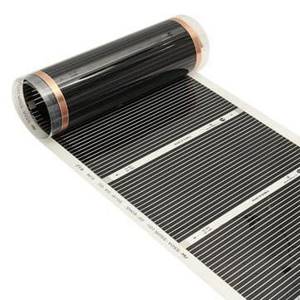
In film infrared heating, the main material is a thin layer of graphite, which is applied to a thermoplastic film. Instead of graphite, a carbon thread can be used - when heated, it creates a heat flow. Note that film heaters create a single integral system, but it consists of separate modules. If some section fails, it is not difficult to replace it with a new one without compromising its integrity.
Possible painful symptoms from IR heaters
What symptoms can people experience when exposed to infrared heaters?
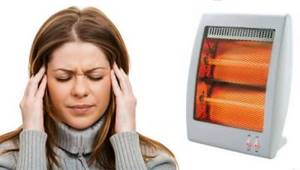
Standing in front of infrared heaters for a long time can cause headaches.
- A headache is a clear sign that it’s time to temporarily turn off the heater or sit away from it.
- A numb or cottony feeling in the head is another sign of adverse effects. Perhaps you incorrectly calculated the power of the equipment you are using or did not ensure that recommendations for its placement in the rooms are followed.
- A feeling of dry skin – a similar sensation occurs after sitting near a fire for a long time. The skin seems to dry out, tighten, and feels overheated. If you feel this effect, sit away from heaters.
Thus, all harm is associated only with improper operation - being close to people, incorrect selection of power, staying in front of the heater for too long, incorrect selection of wavelength .
If you follow the rules of operation of such devices, then you will receive only benefit from them, but not harm.
Fire safety
An outdoor infrared heater or an indoor model usually have a working element temperature of several hundred degrees, while for the housing this figure does not exceed seventy degrees Celsius. This means that the likelihood of interior items catching fire in the event of contact with such a unit is practically zero. Infrared heaters can be left running all night without any worries. Modern models are generally able to function continuously for one or several weeks if necessary. This possibility is ensured by the presence in the design of the device of the function of automatically maintaining the set temperature. Thus, fire safety is one of the features of infrared heaters. The main thing is that nothing interferes with the flow of heat. It is not recommended to cover the devices with tulle or carpet, as this will lead to a decrease in the efficiency of the devices: heat simply will not enter the room.
Safety precautions
Installation and connection of the heater must be carried out only in accordance with safety regulations. If the technical requirements are met, the device will be safe for health even with prolonged use - 24 hours a day.
Forbidden:
- operate the heater without grounding;
- use the device in rooms with the presence of flammable liquids, steam-air mixtures, flammable dust or fibers, in very dusty rooms and during repairs;
- wipe the radiating plates with flammable liquids while the heater is operating;
- install the heater next to furniture and curtains;
- leave the device turned on unattended;
- use a clothes dryer.
You should purchase original devices from trusted manufacturers, made of quality materials.
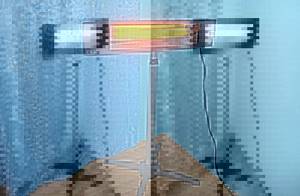
Methods of protection
To reduce the negative impact of a heater on health, you need to follow a few simple rules.
Helpful Tips:
- Do not place the heater directly above a place where people are constantly present; it is better to install it in the far corner of the room.
- Avoid sleeping near short-wave infrared light as it may cause dry skin.
When choosing a heater, you don’t need to give preference to the cheapest options. The cost of such a device can only be reduced by using low-quality materials that release hazardous elements into the air when heated.
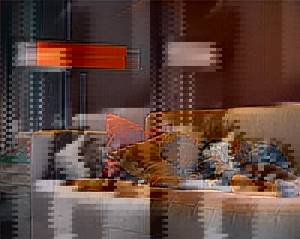
Ensuring safe use
To be sure that the device does not harm the health of loved ones, you need to choose a high-quality device of suitable power and use it correctly.
How to choose a safe IR heater
When choosing, experts recommend adhering to several rules. They will help you make the right purchase and avoid possible harm to your health.
Selection principles
- During the purchasing process, you should pay attention only to trusted brands and manufacturers.
- Cheap devices are most often made from low quality materials. Such a heater will quickly fail and can cause even greater damage to health.
- It is also better to refuse to purchase a powerful unit. They emit short waves that negatively affect the body.
- For a large area, it is better to purchase several devices with low power. They will ensure uniform temperature in the room and will not harm the body’s vital systems.
Which device to choose
Consumers are often faced with the problem of making the right choice when purchasing a heater for their home or garden. Modern manufacturers offer a wide range of heaters, which differ in the type of heating element and type of fastening.
- The most popular is the ceiling one. It does not take up much space, the rays spread evenly across the entire area of the room without having a big impact on a person.
- The wall-mounted one does a good job of warming up a certain area in the room. Such a device performs not only the function of a heater: film panels can serve as an original decorative element.
- Floor standing is distinguished by its mobility. It is easy to move between rooms in a house or apartment. Now there is a separate type of floor heaters on the market. They can be hidden under the carpet. The room will always have a comfortable temperature, and the rays will not have a direct effect on the person.
There are two groups based on the type of heating elements.
- The first includes tungsten, carbon, heating elements. They stand out for their relatively low cost and fast heating system.
- The second group includes ceramic and film radiators. The main advantage is safe use. Attractive design will help you easily fit into any interior.
Important: heaters of the first group are not recommended for use in the bedroom, since the heating elements are located in an open area, without additional protection.
Rules for safe operation
It is useful to follow the necessary recommendations and instructions not only when purchasing, but also when operating the device. In this case, the devices will not be dangerous, and their use will be useful for the home and comfortable for its residents.
- During operation, it is prohibited to touch the heater with exposed parts of the body. Doing so will result in burns and blisters. Children should also be protected from sudden touching.
- It is necessary to use infrared radiators only in the position specified by the manufacturer, following all the requirements of the instructions. Neglect and violation can cause fire and injury.
- The distance between the heating device and other household items should be at least half a meter. Objects placed too close to the heater can easily catch fire.
- When installing, it is recommended to contact specialists. They will carry out precise work to provide the room with a radiator. Incorrect installation can lead to malfunctions of the device and its rapid failure.
Important! The electricity consumption also depends on correct installation.
- The surface of the unit must be cleaned of accumulated dust and dirt in strict accordance with the manufacturer’s instructions. Proper care will help significantly extend its lifespan.
Harm of IR radiation
The issue concerning the negative effects of infrared radiation on humans has occupied many leading scientific and medical figures. Numerous studies have been conducted that have shown that these heaters can, in some cases, have a negative impact on human health.
Attention: The greatest harm from infrared heaters is associated with overdrying of the skin, which heats up very quickly, after which moisture evaporates, which the body is not able to quickly restore.
If you stay in close proximity to such a heater for a long time, you can get burns. After all, at a short distance, this heating device emits waves that are the most dangerous.

Infrared radiation is always present in any production. People who are in the workplace are regularly exposed to it. If the skin is not protected by clothing, then with daily exposure changes occur within its structure. In particular, the permeability of cell membranes decreases, protein melting occurs, which is irreversible, and the appearance of blood cells changes.
The eyes also suffer from radiation. Especially the retina and lenses. Because of this, vision may deteriorate. In addition, cataracts may develop in the future.
To heat various outdoor objects, heaters that emit short or long waves are most often used. They can be installed in gazebos, cafes, and summer areas. If such a device is installed indoors, a person regularly exposed to radiation can get quite severe burns. Often, skin redness and blisters appear.
Scientists' opinion
The results of recent scientific research have confirmed the positive effects of long-wave infrared rays on human health and immunity. But this applies to short-term exposure. Otherwise (with prolonged directed heating), doctors say, the skin is overheated and dried out, which has a detrimental effect on its condition. In addition, burns to the retina and lens are possible, so experts strongly do not recommend looking at the heated elements of heaters.
Everything in moderation
It will be useful to warm up near a heat source when you come in from the cold, but sleeping in the immediate vicinity of an IR heater is harmful and dangerous. A working appliance hanging from the ceiling or standing in the corner of a room will cause just as much harm as a fireplace. You're not afraid to sit by the fire, are you? But an open flame is a powerful source of infrared radiation.
How to choose a good one
IR heaters operate on a principle that can be compared to sunlight. While oil and convection heaters heat the air in the immediate vicinity, IR heaters fire rays that raise the temperature of objects they encounter along the way. Only the heat of solid objects heated in this way increases the air temperature.
In the case of infrared heating using panels, objects and people again reflect the accumulated heat, thereby ensuring comfort throughout the entire room with an even temperature distribution.
According to the installation method, heaters are distinguished:
- ceiling;
- floor, baseboard;
- wall-mounted
Blocks that are attached to the ceiling are most in demand today, as they completely eliminate the effect of convection and do not tolerate dust. In addition, the mounted device does not require much space; it is mounted in a suspended ceiling or attached to a conventional one using brackets.

Floor-standing electrical appliances are less efficient than ceiling-mounted ones, because their radiation flow is not directed directly, thereby making heating more difficult. For home use, it is best to choose progressive carbon devices. Their heating elements are made in the form of a quartz tube with a carbon spiral inside. Although during operation they emit a reddish glow that is not very pleasant for the visual organs. The ceramic element does not glow as well, but is inferior in quality.
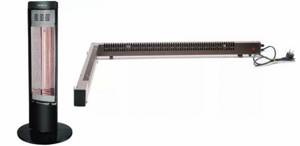
Some IR wall heaters consume less electricity than other devices. They heat semi-closed rooms and open areas well.
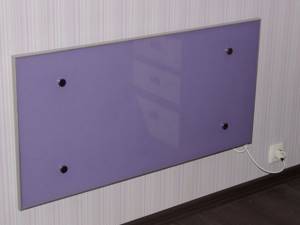
Portable models are compact in size, but can heat a much smaller area than stationary ones.
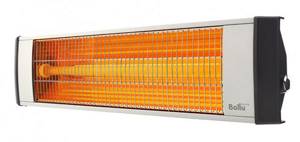
Modern infrared devices are of the following types:
- Quartz. They are the safest for use (the temperature of the heated elements is 450–500 ºС). Quartz glass serves as a radiation filter.
- Halogen. Not recommended for use in residential buildings, suitable only for large spaces (elements temperature is 2000 degrees). Gas is pumped inside the flask; if it is damaged, the substance can be hazardous to health.
- Carbonaceous. Devices with a spiral are considered reliable and durable, resistant to elevated temperatures (carbon elements are heated to 600–700 degrees).
- Micathermic. These new products are characterized by the highest efficiency and safety. Covered with a mica plate, the element is heated to 60–80 degrees. The reliability of this type of heating equipment for the home has been tested in practice.
- Ceramic. Thin wall panels come in a variety of shades. The model can be matched to any interior. They are installed in apartments and houses after renovation, where it is necessary to carefully install the heating system without spoiling the finish.
- Steel. Such devices use a metal radiating panel. Outwardly, they resemble fluorescent lamps. Their main advantage is their small thickness.
- Film. The most original and beautiful models. Produced in the form of unfolding pictures. They look great and are suitable for temporary heating.

If you are already planning to purchase a heating device, it is recommended to choose devices with long-wave radiation. Such models do not pose a danger to people during operation.
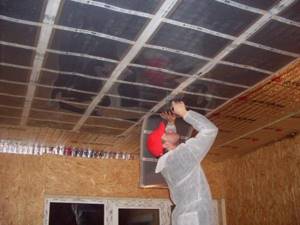
What damage can an infrared heater cause?
The damage from infrared heaters can be quite significant. For example, a quartz heater, often used by people in various devices, can act in this way:
- Its effect causes the skin to dry out due to the intense release of moisture from the side where the infrared rays come from.
- A quartz heater can cause burns. This often happens in infrared saunas.
- Heat flow has a biochemical effect on people due to its effect on the protein of the skin. It changes the permeability of the blood cell membrane.
- With prolonged exposure, the heater can cause damage to the eyes: the retina and lens suffer. This often causes the occurrence and development of cataracts.
Infrared heating installed in an apartment can have exactly the same effect on people’s skin.
Large doses of infrared radiation are harmful to health. Workers in workshops where glass or metal processing is carried out by an infrared apparatus were examined. It was recognized that the skin of workers in such industries loses its protective qualities due to the high intensity of heat.
Many people ask whether a quartz heater, which is used in physiotherapeutic procedures, is harmful or not. There is no great danger from such a device, since in medical institutions all radiation parameters are strictly regulated, and such an infrared heater affects patients for a very short time, so it cannot cause any damage to the patients’ skin.
There are established sanitary standards for long-term human stay in a room where an infrared heater is located. In infrared saunas, the effect of heat on people is short-term, so it is possible to use intense irradiation with a power of up to 450-490 W/m², but the technology must be strictly adhered to, otherwise a burn is possible. Scientists consider such saunas useless, since they have no advantages over traditional stoves.
Features of IR heating
IR heaters are widely used in various rooms. Depending on the installation location, devices are of the following types:
- Wall-mounted IR batteries replace the traditional heating system and are produced in the form of radiators, baseboards, and stylish panels; prevent the formation of mold. The disadvantages include high cost, poor heating of the room in frosty weather.
- Floor systems are easy to install, not dangerous in terms of fire, have a long service life, and prevent dampness in the room. Disadvantages include selectivity of installation locations; it is necessary to cover the structure with materials that conduct heat.
- Compact devices are usually installed on the floor. Mobility allows you to move the device from place to place.
- Ceiling infrared heaters are also popular.
The whole truth and myths about them are as follows:
- Misconception No. 1: This technique is dangerous in itself. In fact, just as we are not afraid of the sun, we should not be afraid of an infrared heater either; prolonged intense exposure to short waves can cause harm to health.
- Misconception #2: Burning oxygen. Experts prove that modern devices do not create conditions for the combustion of a chemical element. The burning smell comes from settled household dust. Any device that increases the air temperature in the room dries it out, this also applies to the central heating radiator. Therefore, in winter, to create a healthy microclimate, it is recommended to use a humidifier.
The advantage of the design is that the energy rushes down, a “clump” of heat is created in the necessary places.
Advantages of heaters
Many people are interested in whether infrared heating is harmful to humans. Experts say: devices with electromagnetic radiation are beneficial provided that all components are produced with high quality. In this case, the advantages are:
- absence of released toxins;
- the ability to quickly warm the required area;
- silent operation;
- ease of installation;
- create a microenvironment that is harmful to the fungus;
- safety of the device, the surface of which does not heat above 46 degrees;
- economical energy consumption.
According to experts, systems with infrared rays also have disadvantages; infrared heaters are harmful to humans if they are used incorrectly.
How to avoid negative influences
For safety reasons, infrared heating should be installed correctly; otherwise, the harm to health may be significant. Experts do not recommend installing the system on ceilings in a child’s room. You should not sleep under these reflectors; this can lead to poor health, migraines, nausea and heat stroke.
The harmfulness of such a source of rays lies in the “burning” effect. When the skin heats up, it does not have time to sweat and becomes dry. Intense exposure can cause burns. This is especially dangerous for the eyes; when heated, the lens and retina are damaged, and there is a risk of cataracts.
If you imagine how chicken is baked under the grill, you can understand what will happen to the skin under prolonged exposure to short infrared rays. Therefore, it is recommended to choose a heating device in the medium and long wave range of 50−200 microns.
Heaters with halogen and carbon elements have a negative impact on health; instead, it is better to choose sources with a ceramic body.
Methods of protection against infrared radiation
In order to understand whether an infrared heater is harmful or not, you need to familiarize yourself with the methods of protection against their radiation. There are several effective methods to reduce the negative impact of infrared heaters on the human body. Here a lot depends on the correct choice of the heater and the location of its installation:
- The IR heater should not be installed in a children's room or bedroom. If for some reason this cannot be done, then it should be sent to an area where people are not constantly present. In no case should the radiation from it fall on the bed, since then the person will be constantly exposed to radiation.
- It is best to install the IR heater in the far corner of the room or under the ceiling. This arrangement will allow you to efficiently warm the room and protect people from direct exposure to radiation.
- You should not buy infrared heaters that have too much power for heating residential premises. As the practice of their use shows, it will be enough for it to efficiently heat only the ceiling, floor and walls. They, in turn, will transfer heat to the room.
- When choosing a heater, you should give preference to high-quality models. When buying a cheap product, you risk not only that it will quickly fail and will not be able to perform the functions assigned to it, but also your health. After all, when heated, harmful substances will enter the atmosphere of the room. The safest are tubular, ceramic and carbon IR heaters.
- Before purchasing an infrared heater, you should carefully read its performance characteristics. Find out all the details related to its operation. This information can be obtained from consultants or found on the Internet. It would be a good idea to read reviews about it.
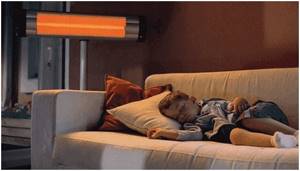
If you follow these rules, you can not only quickly and effectively warm the room, but also protect yourself from the negative effects of infrared rays on the human body.
Harm of an infrared heater
Infrared heaters operate in temperature ranges from 300 to 800 °C. The length of the waves emitted by it depends precisely on the temperature of the heating element. Long IR waves do not have a harmful effect on humans and even increase their immunity. These are the waves that come from heaters operating in the temperature range of 300–400 °C. The heater does not light up. As the temperature increases, the waves shift into the visible part of the spectrum, changing their color from burgundy to white. Infrared heaters, whose maximum radiation occurs at short waves, cause significant harm to health.
dry skin
It should be noted that any heating element emits a whole set of frequencies, however, the distribution of their intensity depends specifically on temperature. The human body itself emits and happily absorbs wavelengths of 9.6 microns. Such waves penetrate the skin to a depth of 0.3 microns, being absorbed in its upper layer. Whereas the shortest IR waves penetrate the skin up to 4 cm! What is the harm they cause? Like the flame of a large fire, they quickly heat the illuminated surface without changing the temperature of the other side. As a result, this leads to the following harmful consequences.
- cataract formation
This not only dries out the skin, dehydrating it, but can also cause burns.
- Insidious short-wave heat can have a photochemical effect on cells. With sufficient wave intensity, cell membranes are disrupted and the configuration of protein molecules is lost. This can lead to a change in their physicochemical properties. We see something similar when curdling and boiling sour milk.
- Thermal effects on the reticular structure of the eye and the lens lead to the formation of cataracts.
Knowing that some infrared heaters are harmful to health, you should responsibly prepare for the purchase of such a device.
Advantages of IR heaters and recommendations for use
But when figuring out whether an IR heater is harmful to a person, you should understand that if used correctly, it will not only not harm your health, but will also become an excellent means of heating. After all, an infrared heater has numerous advantages:
- silent operation;
- fast heating speed;
- long service life;
- uniform heating of the surface;
- the ability to heat only the necessary zones, and not the entire room.
Attention: When choosing an infrared heater, you should carefully study the instructions and thoroughly find out what its benefits and harms are, what waves are produced during operation of this device.
Much depends on the material from which the heating element is made. You should not purchase devices that use a halogen lamp as a heating element. It emits short waves, which pose the greatest danger to human health. Such devices should not be used for household purposes, as this will negatively affect your well-being.
Types of heating element, advantages and disadvantages, which one to choose
When choosing an infrared heater, keep in mind that the models differ in the shell in which the heating element is placed. It can be metal, quartz or ceramic.
As for the heating element, there are several types:
Halogen
The device looks like a halogen lamp operating in the infrared range. In the internal cavity of the product there is a filament, which is made of carbon fiber or tungsten.
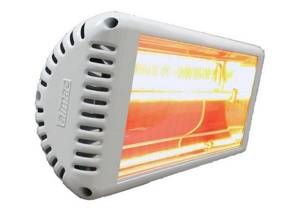
When the filament is heated, infrared energy is released and subsequently transferred to the tube.
The peculiarities of halogen lamps include the emission of light of a golden hue, which irritates the eyesight. To eliminate the effect, a number of manufacturers apply a special composition.
But even this is not the main disadvantage. Halogen heaters emit short waves that are hazardous to human health. That is why it is better to refuse to purchase such devices.
Carbon
Such a heating element has the form of a quartz tube, in the cavity of which there is a vacuum. A carbon spiral is installed inside the tube.

The advantages of the device include a high heating rate, as well as high efficiency.
Disadvantages: small resource, which does not exceed 2 years. In this case, the power is 1-2 kW.
A special feature of carbon IR heaters is their red glow, which is dangerous for people with allergies and asthma.
Generally speaking, products with such heaters are more suitable for short-term use.
Ceramic
The advantage of a heating element with ceramic coating is the absence of glow during operation, as well as a longer service life (from 3 years).
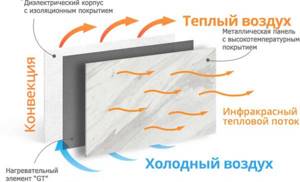
The downside is the high price (when compared with its quartz counterpart). But it is worth noting that the increased costs pay off faster due to the design features of the product.
Despite their slow heating and cooling times, ceramic infrared heaters are often used in saunas and hospitals.
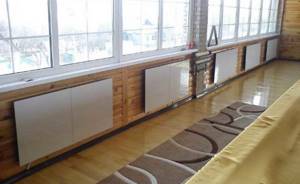
Micathermic (tubular)
This type of heating element is made of metal and structurally involves the use of a ceramic element.
Pros: reliability, ease of use and long service life. The disadvantage is the presence of slight cracking.
The reason for the crackling sound is the difference in the coefficients of thermal expansion of the aluminum housing and the steel spiral.
When choosing an IR heater of this type, check the parameters of the heating element, the quality of the housing, the insulator, the foil and the emitter. This device is the best option for long-term use.
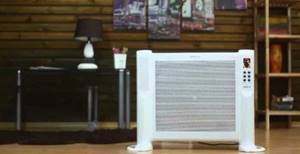
Film infrared analogues
They are mainly used as infrared heated floors, but can also be used as elements for individual heating. Film infrared heaters are usually wall-mounted. Often used in bathrooms.

Element insulator
During prolonged operation, the body of the infrared heater may overheat above a temperature of 95 degrees. To avoid the problem, an insulator is installed, which comes in several types.
The most widespread type of product is the basalt type. It is especially important that it does not contain harmful additives, because such components, when heated, release toxic formaldehyde, which is dangerous for the human body.
Please note that the thermal insulator is approved for use in the food industry, which guarantees the safety of the product. To do this, study the hygiene certificate - it should have a corresponding mark. At the first request of the buyer, the seller is obliged to present the document.

Additional options
Modern models of infrared heaters often provide a number of additional options.
These include:
- Built-in thermostat, which guarantees that the temperature is maintained at the set level. It is not mounted on all models, but its presence is an advantage.
- Overheat protection. Installation of a sensor that monitors the temperature of the heater is mandatory when the device is operating without owner supervision.
- Rollover protection. The main task of the sensor is to turn off the product if it falls. This option should be available in floor-standing models.
- Remote control. The possibility of remote control simplifies the process of use. The presence of a remote control is a prerequisite for ceiling models, while in other devices the option is provided at the discretion of the manufacturer.
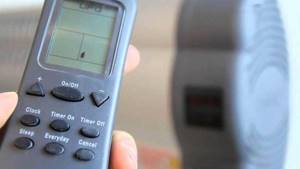
Contraindications to the use of infrared radiation
The use of infrared radiation as a therapeutic or prophylactic procedure should be avoided in the following cases:
- pregnancy and lactation;
- frequent bleeding;
- purulent processes;
- chronic diseases in the acute stage;
- blood diseases;
- oncological diseases.
The special properties of infrared radiation in these cases can cause harm to the body, which will aggravate existing diseases. In the presence of such contraindications, such treatment will definitely not bring benefit.
Popular myths about emitters
Despite the many obvious advantages, the question of the harm of IR heaters stops many from purchasing. Let's try to debunk the most common prejudices regarding radiant heating equipment.
Myth No. 1. IR heaters are dangerous a priori
It is impossible to speak categorically about the dangers of infrared equipment. This is equivalent to saying that the Sun is 100% evil. After all, their action is similar.
On a hot summer day in the sun, especially without a hat, you can easily suffer from heatstroke. But if you choose the right time for a walk, wear a scarf and sit in the shade, the sun's rays will bring exceptional benefits.
The same applies to infrared emitters. Sitting in an embrace with a device of dubious quality is definitely dangerous. But a well-chosen and positioned device from a trusted brand will not do any harm: on the contrary, it will improve your well-being, have a tonic effect on the body and save money on heating.
The effectiveness and safety of infrared radiation in a reasonable dosage has been proven by many scientific studies. A strong argument in favor of IR radiation is its widespread use in medicine and manufacturing (including food production).

Correctly dosed infrared radiation has anti-inflammatory, analgesic, antispasmodic, stimulating and circulatory effects. It should not be perceived as an absolute health threat.
Myth No. 2. Devices burn oxygen
Not a single heater burns oxygen - this is an ordinary story. Oxygen is an oxidizing agent, and combustion is, in fact, a special case of oxidation, accompanied by the release of heat. Oxidize the oxidizing agent? This is some kind of anti-scientific nonsense.
It is more correct to say that heating equipment can “dry” the air (and with it all the mucous membranes) in the room. After all, a decrease in the relative humidity of the air is a natural process when it is heated. Only house dust can “burn” the heater.
By the way, you should not believe the advertising slogans of manufacturers that there are good heaters that do not dry the air at all (read - their products), and there are bad ones (that is, from all other companies). All heating units reduce indoor humidity. ICO is no worse or better than others in this matter.
How to deal with drought? To make it easier to breathe in the house during the heating period, the rooms need to be regularly ventilated, wet cleaning done daily, and perhaps purchase an air humidifier.
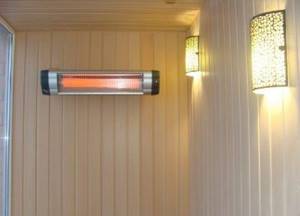
High temperature IR devices cannot be used in fire hazardous areas. To avoid burns, do not touch the surface of the operating device.
First aid for heatstroke
If complications cannot be avoided, it is necessary to take a set of certain measures.
When providing first aid for heatstroke, the following steps should be taken.
- Call an ambulance.
- Move the victim to a cool place, preferably in the shade, where there is access to fresh air.
- Make it easier for him to breathe by removing or unbuttoning his clothes. Give validol.
- Place the victim in a horizontal position, raising his legs.
- Give the victim 1 liter of water with a little salt.
- Cool the person by wrapping him in a cold wet towel and applying ice to his forehead.
- In case of loss of consciousness, it is necessary to give the victim a sniff of ammonia.
How to avoid the harmful effects of IR rays
So, we already know that short-wave radiation is the most dangerous for humans. Now it remains to find out where it can lie in wait for us. First of all, the sources of such radiation can be bodies whose temperature is more than 100°C. It can be:
- Industrial sources of beam energies. These include steelmaking furnaces and electric arc furnaces. In order to protect the personnel serving such enterprises, it is necessary to issue protective equipment, install heat-protective screens, improve the production process, and carry out therapeutic and preventive measures on an ongoing basis.
- Heating devices. If previously the Russian stove was popular among the population, the heat of which was extremely comfortable and also had healing properties, then such a detail is alien to modern people. Wonderful stoves have been replaced by electric-powered heaters. They can also be divided into “useful” and “harmful”. Thus, models whose spirals are insulated with a special material emit favorable and soft heat into the environment, but options with open heating elements generate the notorious short infrared waves, whose abilities we already know. Manufacturers must indicate the nature of the emitted waves.
IMPORTANT! If you already have a heater with open coils. Remember that the closer it is to you, the less time you need to keep it on.


